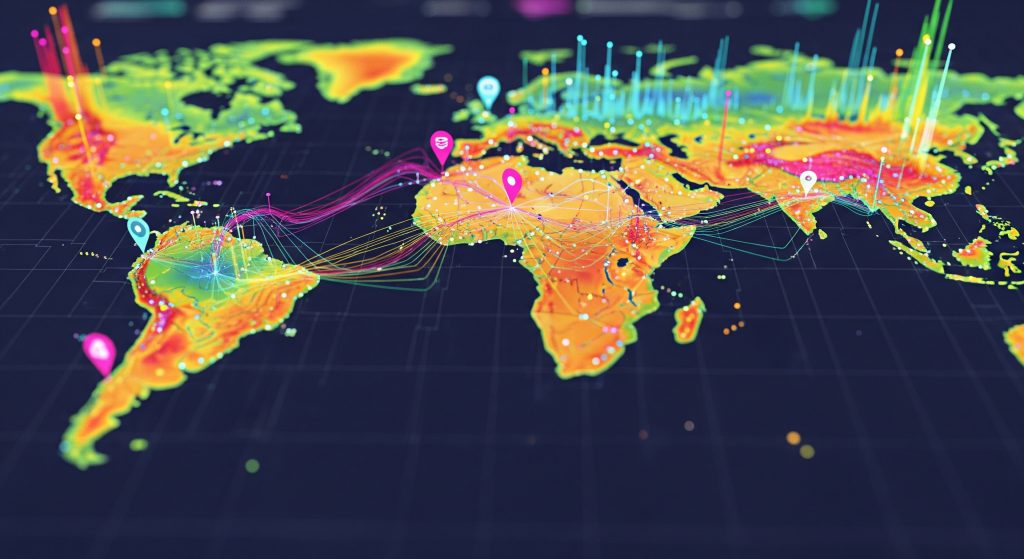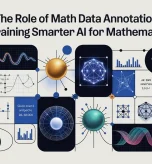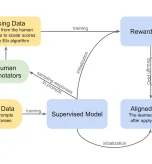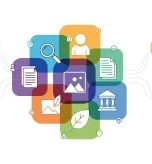In an era where data drives decision-making across industries, geospatial data analysis has emerged as a critical tool for understanding our world in a whole new dimension. From urban planning to disaster management, geospatial data allows for deeper insights into phenomena and events than ever before.
This article will provide a comprehensive look at geospatial data analysis, covering what it is, the types that exist, its many uses, and its relationship to geospatial AI.
What Is Geospatial Data Analytics?
Geospatial data analysis is the process of collecting, managing, and interpreting data that has a geographic component. It involves using advanced software and statistical methods to identify patterns, relationships, and trends based on physical location.
Think of it as adding a “where” dimension to traditional data analysis. Instead of just knowing what happened, you understand where it happened, why it happened there, and what is likely to happen next based on location-specific factors.
This approach helps organizations and city planners make smarter, location-informed decisions across industries like urban planning, agriculture, logistics, and environmental monitoring. Key aspects of geospatial data analytics include:
- Pattern Identification: One of the primary goals of geospatial data analytics is to identify spatial patterns and trends. This could be anything from identifying clusters of disease outbreaks to pinpointing areas with high crime rates to predicting ecological changes.
- Data Visualization: Visualization plays a crucial role in geospatial data analytics. It transforms complex datasets into visual representations like maps, graphs, and charts, making it easier for decision-makers to understand and interpret the data. The data can be represented via 2D or 3D models.
At its core, this analysis relies on high-quality geospatial data annotation to give context to raw location data.
Understanding Geospatial Data
Geospatial data, at its core, is data that is associated with a specific geographical location on Earth’s surface or near it. It is one of the basic elements of spatial data science. However, it does not purely relate to data about a geographical feature, it can also describe dynamic objects or events. Consequently, it integrates three key components:
- Location Data: This refers to the geographic coordinates (latitude and longitude) that pinpoint a specific place on Earth. Location data forms the foundation of geospatial analysis as it gives context for other information which, when combined, provides true location intelligence.
- Attribute Information: Attribute information, also known as non-spatial data, includes details or characteristics related to a particular location. These can be anything from population statistics and weather data to land use information and customer demographics. Attribute information may also include historical data.
- Temporal Information: Temporal data adds the time dimension to geospatial analysis, allowing us to track changes over time. It helps in understanding how geographic features and attributes evolve, making it invaluable for monitoring trends and predicting future developments.
Basic Types of Spatial Data
Geospatial data can be broadly classified into three main types from a technical standpoint:
- Vectors: Vector data represents discrete features as points, lines, or polygons. Points could be used to mark specific locations, lines to represent roads or rivers, and polygons for regions like states or countries. This data type is excellent for representing boundaries, networks, and discrete objects. Examples: Store locations (points), road networks (lines), sales territories (polygons), delivery routes (lines).
- Rasters: Raster data divides the Earth’s surface into a grid of cells or pixels. Each cell contains a value, typically representing a continuous attribute, such as temperature or elevation. Raster data is suitable for representing continuous phenomena across space. Examples: Satellite imagery, elevation maps, weather patterns (temperature heatmaps), land use classifications.
- Attribute Information: While not spatial data per se, attribute data complements spatial data by providing context and additional information related to locations. As we’ve mentioned, this can include population counts, economic data, or any other non-spatial attributes that help enrich geospatial analysis.

How Businesses Leverage Geospatial Data Analysis (Modern Use Cases)
Over the years, location intelligence is transforming business. Discover how modern geospatial data analysis reveals hidden patterns, optimizes operations, and drives strategic, data-driven decisions for unprecedented growth.
1. Retail & E-commerce
- Hyper-Local Demand Forecasting: By analyzing local demographics, foot traffic data, and online search trends in a specific area, retailers can stock stores and warehouses with the products customers are most likely to buy, reducing waste and maximizing sales.
- Site Selection & White Space Analysis: Instead of guessing, businesses can model the ideal location for a new store by layering data on competitor locations, customer demographics, and accessibility, ensuring they open in a high-potential “white space.”
2. Logistics & Supply Chain
- Real-Time Route & Fleet Optimization: Geospatial platforms analyze live traffic, weather conditions, and delivery schedules to dynamically reroute fleets, cutting fuel costs, reducing delivery times, and dramatically improving operational efficiency.
- Supply Chain Risk Management: By mapping out supplier locations, shipping lanes, and warehouses, companies can model the impact of geopolitical events, natural disasters, or port closures, allowing them to build more resilient and agile supply chains.
3. Insurance & Financial Services
- Hyper-Accurate Risk Assessment: Insurers use high-resolution raster data (like flood plains, wildfire zones, and storm paths) to price policies with incredible precision, ensuring profitability while offering fair rates to customers.
- Fraud Detection: By analyzing the geographic coordinates of financial transactions, banks can flag suspicious or impossible patterns (e.g., a credit card being used in two countries simultaneously) to prevent fraudulent activity.
4. Agriculture (AgriTech)
- Precision Farming: Drones and satellites collect raster data on soil health, moisture levels, and crop growth. Farmers use this analysis to apply water, fertilizer, and pesticides only where needed, boosting yields and promoting sustainability.
The Future is Spatial and its emerging Trends
The field is evolving rapidly, driven by three key trends that are pushing the boundaries of what’s possible.
- Geospatial AI & Predictive Modeling: AI algorithms are now being trained on vast geospatial datasets to predict future events, from forecasting urban growth patterns to identifying areas at high risk of climate change impact.
- Real-Time IoT Integration: The explosion of Internet of Things (IoT) devices from sensors on delivery trucks to smart infrastructure in cities is providing a constant stream of live location data, enabling truly real-time analysis and decision-making.
- Digital Twins: Companies are creating virtual, 1:1 replicas of their physical assets and supply chains. These “Digital Twins” are powered by geospatial data and allow for complex simulations to optimize performance and test for vulnerabilities in a risk-free environment.
Geospatial Analysis and GeoAI
Geospatial data analysis serves as the foundation for GeoAI (Geospatial Artificial Intelligence), an emerging field that leverages artificial intelligence and machine learning techniques to extract even deeper insights from geospatial data.
GeoAI enables the automation of many tasks such as image recognition, land cover classification, and route optimization, making it a powerful tool for industries ranging from agriculture to the utilities sector to asset management.
To provide an even more concrete example, geospatial AI sees use in automatically detecting and analyzing environmental degradation and changes. But the most common use of geospatial AI is likely for autonomous vehicles –self-driving cars couldn’t function without some type of GeoAI.
But that’s just scraping the surface. Geospatial AI is a relatively new field and it can find use in any industry that has a need for a machine learning analysis of geospatial data, which can be anything from large-scale government projects to unique, business-focused ones.
Have an Idea of How Geospatial AI Can Contribute to Your Business?
Geospatial data analysis is a multidimensional approach to understanding our world. Many organizations can benefit from automatic geospatial data analysis via GeoAI. Aya Data specializes in bespoke geospatial solutions – we can help with any aspect of your project, from data acquisition to creating and deploying a geospatial AI model.
Contact us to schedule a free consultation with one of our experts if you wish to find out more about how Aya Data can contribute to your project.
Frequently Asked Questions
What is the difference between GIS and geospatial Analysis?
Geographic Information Systems (GIS) are the tools and software used to capture, store, and visualize geographic data (the “what” and “where”). Geospatial analysis is the process of using those tools to interpret the data, ask complex questions, and find patterns to understand the “why.”
What is an example of geospatial data in daily life?
When you use Google Maps to find the fastest route to work, it’s performing geospatial analysis on real-time traffic (vector and raster data). When a food delivery app shows you nearby restaurants, it’s using geospatial data to filter by proximity.
Is geospatial data the same as location intelligence?
They are closely related. Geospatial data is the raw material (the coordinates, the satellite image). Location intelligence is the finished product the actionable business insight you gain after analyzing that data.
How do I get started with geospatial analysis for my business?
The first step is to identify a key business question with a location component (e.g., “Where are our most valuable customers?”). The next step is to acquire and prepare the necessary data, which is often where a specialized partner like Aya Data can accelerate your progress significantly.
How can Aya Data help with GeoAI?
Aya Data offers end-to-end GeoAI solutions, including data acquisition, annotation, and custom model development, tailored to your business needs. Contact us for a free consultation.






